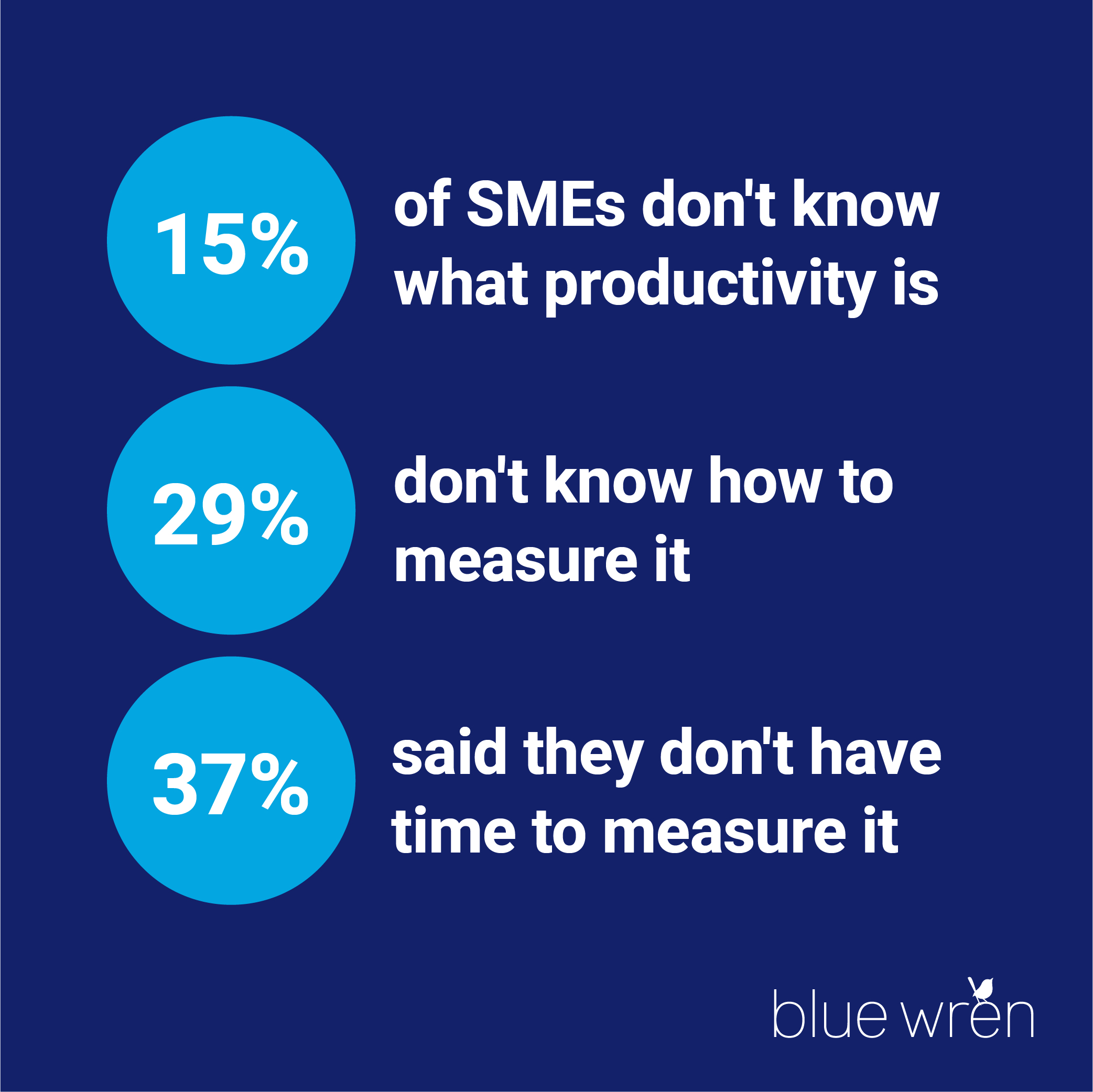Every small business owner knows one key piece of information: efficiency is (almost) everything. When you run a small business, every moment of your time needs to be accounted for, because time is money. Small businesses don’t have as much in-built padding as larger businesses, so they feel a lack of efficiency more keenly.
One way to measure how efficient we’re being is to look at our output, such as productivity. How much are we managing to get done in the time that we have? 37% of Small and Medium-sized enterprises say they don’t even have time to calculate this. This is how precious our time is.
So, how can we speed up our efficiency, and make time to simply measure whether it’s working?
Look at how you spend your time
Most of us have an idea of how we spend our time, but our experiences are very subjective. We might feel like we’ve been working on a project for a couple of hours a week but we might actually be spending a lot longer than we initially realized. The first thing to do is to document a typical week for your company.
You can create a spreadsheet where you keep track, for one week, of every single activity you do (including coffee breaks) and the time that you start and finish each activity. You can then color-code it and put the information into a simple chart.
Once you have a clear idea of how much time you spend doing everything, you can see whether it’s paying off. For example, do you spend hours on projects which aren’t worth your time? Are there processes you could simplify or outright get rid of?
Putting in a little time to do this now will save you heaps of time in the long run. Some people prefer to create a process map in order to visualize the steps they take to complete each process. There’s no reason you can’t do both and color-code your process map with data from your spreadsheet.
Look for ways to simplify
If you sell items online, do you head to the mail office every time you make a sale, or do you have one or two dedicated days a week when you send everything in bulk? Do you juggle multiple email addresses or does everything get forwarded to one place? Do you get business email alerts on your phone, or do you periodically check to see if anything new has come in?
Minimizing the number of times you check on emails, go to the post office, or catch up with colleagues will help you manage your time better, which is key for efficiency. Having dedicated times to complete certain tasks will free you up for other opportunities.
We often think that we’re not wasting that much time checking our emails a few times a day, but doing so can be distracting from other work, and over weeks, months and years, that can add up to a lot of lost time. Even simplifying our work environment can clear our minds for a more efficient work style.
Automate
Automation isn’t just for big businesses. It’s the name of the game for all companies these days. You can save yourself a lot of time and energy by having searchable FAQs or even a chatbot on your website to answer simple questions, like “what are your opening hours?”, for example.
You can also download apps that will analyze your productivity so that you don’t have to spend time calculating it yourself as well. Whether it’s accounting, sales, or even customer service, there are apps and resources that can simplify your work via automation without compromising the integrity of your business.
Sometimes small business owners like to be very hands-on with all aspects of their work, but it’s a good idea to leave some things to the AI so that you can focus on the more creative side of work. Good SaaS websites are crucial for Software as a Service businesses and can offer some great automation features.
Set your goals
One of the best ways to become more efficient is to know what you’re moving towards. Having clear, measurable goals will give you a yardstick for quantifying your success. If you’ve never set specific goals before, you could look at what your productivity was like in previous months and years and go from there.
If you have set goals before, you can decide whether you want to keep them, increase or decrease them, or change them altogether.
Not all goals need to be quantifiable; perhaps your goal is to get more enjoyment out of your business, in which case you could work on automating the more tedious parts of your work in order to have more time for the enjoyable parts.
Whatever you decide your goals should be, write them down, and preferably add a time frame for completing them. You could also break goals down into sub-parts, which can make them a bit more manageable and less intimidating to complete. So if your goal is to completely spring clean your warehouse, you can break that down into different categories.
You could also get help from people in process management if you have the budget for it.
Efficiency is a state of flow
Automation, simplification, setting goals, and taking stock of what we’re currently doing is all about becoming more mindful, and looking for ways to improve the flow of our work, including using AI.
Efficiency doesn’t mean doing more – sometimes it means doing less but achieving the same things, or doing things slightly differently to achieve better results.






